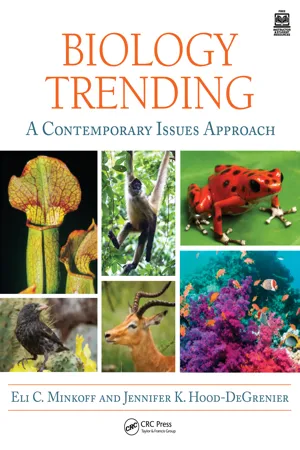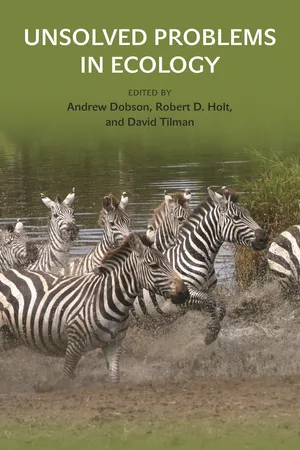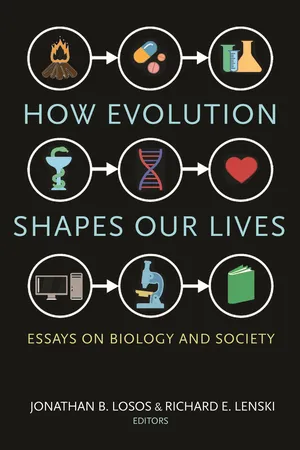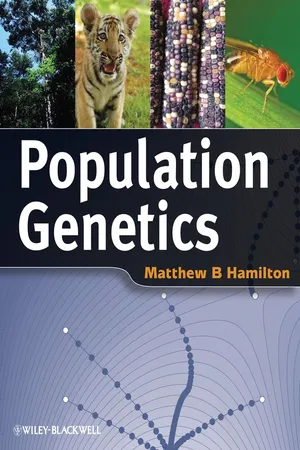Biological Sciences
Variation Biology
Variation in biology refers to the differences that exist among individuals within a species. These differences can be attributed to genetic, environmental, or developmental factors. Understanding variation is crucial in fields such as evolution, genetics, and ecology, as it provides insights into the diversity and adaptability of living organisms.
Written by Perlego with AI-assistance
Related key terms
Related key terms
1 of 4
Related key terms
1 of 3
4 Key excerpts on "Variation Biology"
- eBook - ePub
Biology Trending
A Contemporary Issues Approach
- Eli Minkoff, Jennifer K. Hood-DeGrenier(Authors)
- 2023(Publication Date)
- CRC Press(Publisher)
The human species is highly variable in every biological trait. Humans vary in their physiology, body proportions, skin color, and body chemicals. Many of these features influence susceptibility to disease and other forces of natural selection. Continued selection over time has produced adaptations of local populations to the environments in which they live. Much of human biological variation is geographic; that is, there are differences between population groups from different geographical areas. For example, Northern European peoples differ in certain ways from those from Eastern Africa, and those from Japan differ in some ways from those from the mountains of Peru. Between these populations, however, lie many other populations that fill in all degrees of variation between the populations we have named, and there is also a lot of variation within each of these groups.Central to the study of human variation is the concept of a biological population, as defined in Chapter 5 , p. 172, and as explained again later in this chapter. Both physical features and genotypes vary from one person to another within populations, but there is also a good deal of variation between human populations from different geographic areas as the result of evolutionary processes. How do populations come to differ from one another? How do alleles spread through populations? How do environmental factors such as infectious diseases influence the spread? Why are certain features more common in Arctic populations and other features more common in tropical populations? Why have we traditionally thought of some of these variations as defining “races”? These are some of the questions that are explored in this chapter.7.1 THERE IS BIOLOGICAL VARIATION BOTH WITHIN AND BETWEEN HUMAN POPULATIONS
All genetic traits in humans and other species vary considerably from one individual to another. Some of this variation consists of different alleles at each gene locus; other variation results from the interaction of genotypes with the environment. The simplest type of variation governs traits such as those discussed in Section 3.3 , in which an enzyme may either be functional or nonfunctional. The inheritance of these traits follows the patterns described in Chapter 2 , which you may want to review at this time. In particular, be sure that you understand the meaning of dominant and recessive alleles and of homozygous and heterozygous genotypes. Many other traits, as we saw in Chapter 3 - eBook - ePub
- Andrew Dobson, David Tilman, Robert D. Holt, Andrew Dobson, David Tilman, Robert D. Holt, Andrew Dobson, David Tilman, Robert D. Holt(Authors)
- 2020(Publication Date)
- Princeton University Press(Publisher)
Biotic variation in traits relevant to ecological interactions occurs from subindividual to between individuals within a species or across species. Raw genetic and somatic variation within individuals (or part of them), expressed as traits including behaviors that vary in timing and sequence, may relate to subspecific (e.g., races, morphs) variation, other taxonomic levels, and to higher organizational levels within ecology, paleobiology, biogeography, and other biological sciences. A brief tour of relevant levels of biotic organization helps to identify some of the things that each level contributes or emphasizes. Of course, lower-level variation is included in higher organizational levels but may or may not have effects on higher-level processes. For instance, there is a growing literature on community and ecosystem genetics that investigates the effects of genotype on processes from communities to ecosystems (Whitham et al. 2003).At the level of within-individual variation, individual organisms frequently respond in plastic ways to ambient environmental and biotic conditions, including behaviors, physiological acclimation, developmental flexibility, life-historical changes in timing, and as ecological engineers (Jones et al. 1997). Critically, such plasticity changes both variability encountered and the relationship between this variability and emergent or higher-level processes performed by the organism. Although there is a great deal of literature on behavioral plasticity, developmental plasticity, life histories, and related subjects, it is unusual for studies to make links to emergent higher-level processes of interest. Beyond plasticity, individual history may produce changes in organisms. A plant phenotype might vary through time depending on the history of herbivory and plant responses to herbivory through inducible defenses (Adler and Karban 1994, Karban and Baldwin 1997). Individual history of infection may alter the susceptibility to the same or new diseases in the future in ways that are either positive or negative. Carryover effects from one habitat to another may produce a relevance of spatial history (e.g., Talley et al. 2006), and there are several named temporal carryover effects (e.g., maternal effects) that produce time-lagged responses (e.g., Ratikainen et al. 2008). Organisms with repeating structures, such as plants with multiple leaves and reproductive organs, may produce especially high variation among organs within individuals (Herrera 2009). - eBook - ePub
How Evolution Shapes Our Lives
Essays on Biology and Society
- Jonathan B. Losos, Richard E. Lenski, Jonathan B. Losos, Richard E. Lenski, Jonathan Losos, Richard Lenski(Authors)
- 2016(Publication Date)
- Princeton University Press(Publisher)
Oxford English Dictionary, and you will find 11 definitions and numerous subdefinitions, ranging from mathematical (“the successive transformation of a curve by the alteration of the conditions which define it”) to chemical (“the emission or release of gas, heat, light, etc.”) to military (“a manoeuvre executed by troops or ships to adopt a different tactical formation”). Even with reference to biology, there are several definitions, including “emergence or release from an envelope or enclosing structure; (also) protrusion, evagination,” not to mention “rare” and “historical” usage related to the concept of preformation of embryos. Even among evolutionary biologists, evolution is defined in different ways. For example, one widely read textbook refers to evolution as “changes in the properties of groups of organisms over the course of generations” (Futuyma 2005), whereas another defines it as “changes in allele frequencies over time” (Freeman and Herron 2007).One might think that—as in so many other areas of evolutionary biology—we could look to Darwin for clarity. But in the first edition of On the Origin of Species, the term “evolution” never appears (though the last word of the book is “evolved”); not until the sixth edition does Darwin use “evolution.” Rather, Darwin’s term of choice is “descent with modification,” a simple phrase that captures the essence of what evolutionary biology is all about: the study of the transformation of species through time, including both changes that occur within species, as well as the origin of new species.2. EVOLUTION: PATTERN VERSUS PROCESSMany people—sometimes even biologists—equate evolution with natural selection, but the two are not the same. Natural selection is one process that can cause evolutionary change, but natural selection can occur without producing evolutionary change. Conversely, processes other than natural selection can lead to evolution.Natural selection - eBook - ePub
- Matthew B. Hamilton(Author)
- 2011(Publication Date)
- Wiley-Blackwell(Publisher)
Another primary cause of variation among individuals in quantitative traits is the environment. Even if there is only a single genotype, the phenotype expressed by each individual in a population will vary somewhat depending on the environmental conditions each individual experiences. For example, the biomass and fruit production of plants is impacted by the amount of sunlight and nitrogen each individual receives. Another example of environmental variation in quantitative traits is the roleFigure 9.3The effect of environmental variation on phenotypic variation. The phenotypic distribution on the left is produced by two Mendelian loci with all allele frequencies equal to ½s in Figure 9.2 . If the environment causes some variation in the phenotype expressed by each genotype, then the distribution of phenotypes produced by polygenic variation becomes both smoother and wider. In this illustration, environmental variation causes 50% of the individuals of each genotype to randomly increase or decrease one unit in phenotypic value. Although the average effect of environmental variation here is a zero change in phenotypic value, the phenotypic variance increases.of diet and exercise in human disease, where better conditions tend to lessen the frequency or severity of disease phenotypes. Figure 9.3 shows how environmental differences among individuals contribute to the continuous distribution of phenotypic variation. The left-hand panel of Fig. 9.3 shows the five phenotypes produced by a trait due to two diallelic loci. If each phenotypic class expressed by a genotype is modified by environmental variation, the distribution of phenotypes becomes both wider and smoother as shown in the right-hand panel of Fig. 9.3
Index pages curate the most relevant extracts from our library of academic textbooks. They’ve been created using an in-house natural language model (NLM), each adding context and meaning to key research topics.
Explore more topic indexes
Explore more topic indexes
1 of 6
Explore more topic indexes
1 of 4



